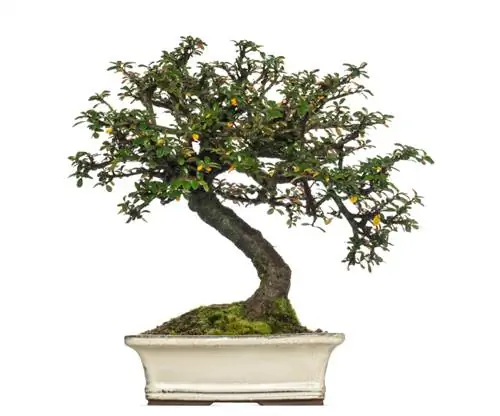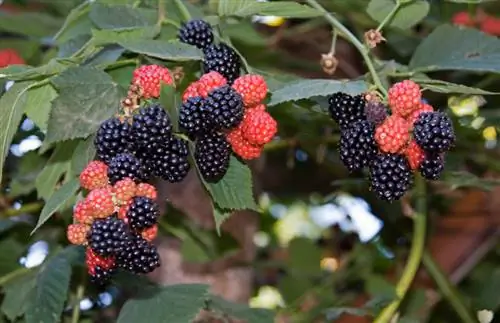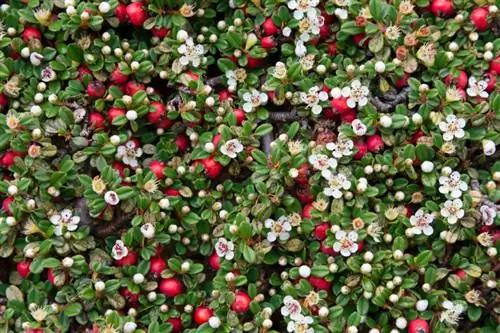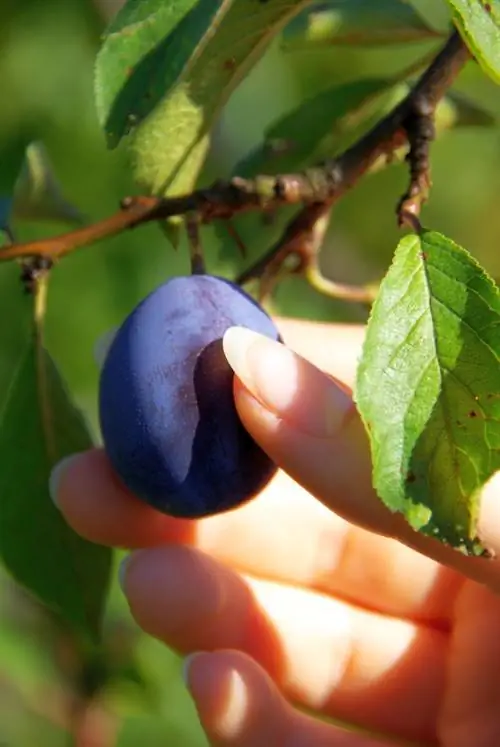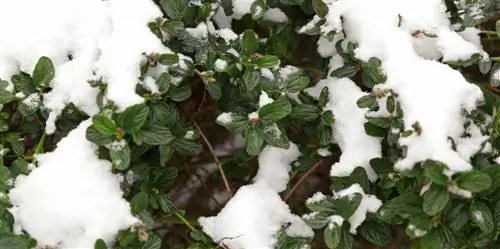- Author admin [email protected].
- Public 2023-12-16 16:46.
- Last modified 2025-01-23 11:20.
If you have fallen in love with the cotoneaster but don't have much space left in the garden for this ground cover, a bonsai is a space-saving alternative. But what requirements does such a plant have?
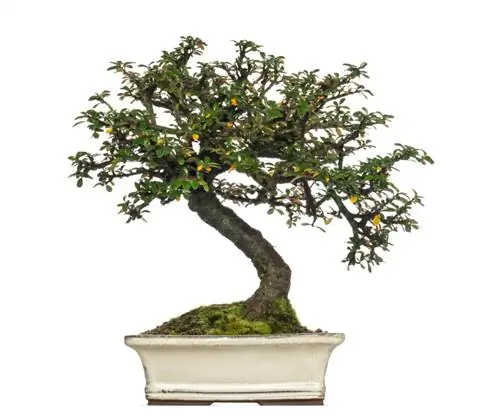
How do I care for a cotoneaster bonsai?
A cotoneaster bonsai requires regular cutting, wiring, watering and fertilizing to thrive. The ideal location offers sunny to partially shaded conditions with a permeable substrate such as bonsai soil. Popular varieties include Cotoneaster horizontalis, preacox, microphyllus, conspicuus and congestus.
Proven varieties
Whether for the garden, the balcony or the terrace, there is not just one variety of cotoneaster that is suitable for bonsai design. The most tried and tested varieties include:
- Cotonaester horizontalis
- Cotonaester preacox
- Cotonaester microphyllus
- Cotonaester conspicuus
- Cotonaester congestus
Convincing features of the cotoneaster as a bonsai
These are the characteristics that make the cotoneaster an ideal bonsai:
- absolutely compatible with cuts
- good, rapid budding
- small, shiny leaves
- ornamental flowers and fruits (caution: poisonous)
- small, compact growth
- wirable all year round
What care does the cotoneaster bonsai require?
The cotoneaster is considered easy to care for. But as a bonsai it requires more effort. While it should be repotted and root pruned every two to three years before budding in spring, it is important to trim, wire, water and fertilize regularly.
Cutting and wiring
Wiring this bonsai is always possible. Branches up to three years old can be shaped. When cutting, the following should be noted:
- prune regularly (to two nodes) for greater branching and a compact shape
- cut young bonsais back by half (use the branches for e.g. propagation)
- remove older branches during budding in spring
Watering and fertilizing
The cotoneaster should be watered generously between May and September. It requires a lot of water. Even in winter, the soil should be kept slightly moist. Fertilizer is ideally given every two weeks from March until September in the form of liquid fertilizer (€4.00 on Amazon) or a special bonsai fertilizer.
Which location meets your needs?
The location should be airy in summer and protected in winter. A sunny to semi-shady location would be optimal. This plant does not place any particular demands on the substrate. It should just be well-drained. A special bonsai soil is well suited.
Tips & Tricks
Do not water the bonsai too much in spring. Too much water leads to leaves that are too large and branches that are too long in the cotoneaster bonsai.

